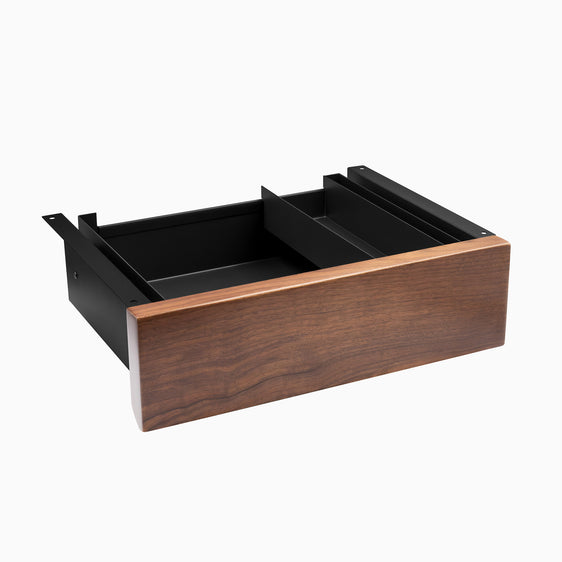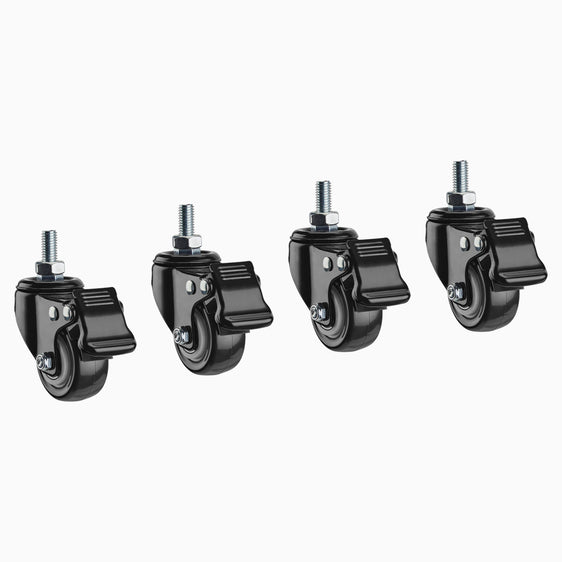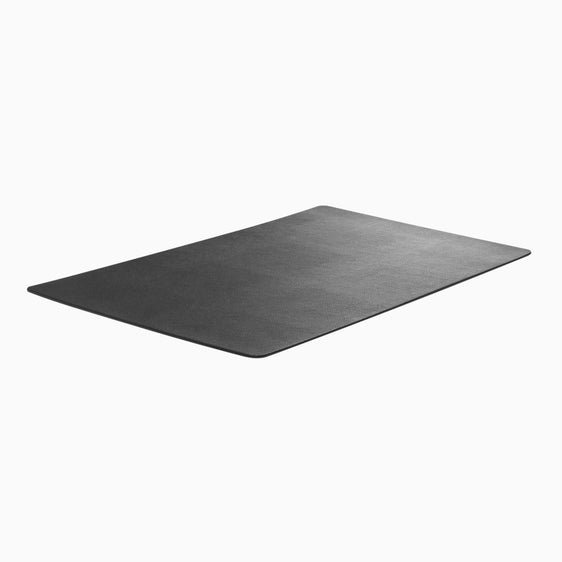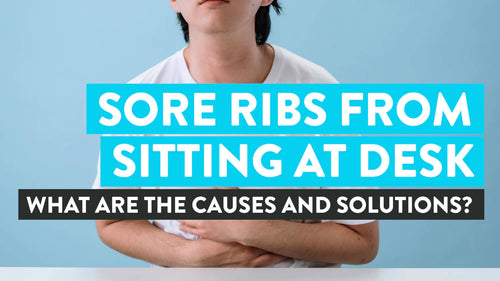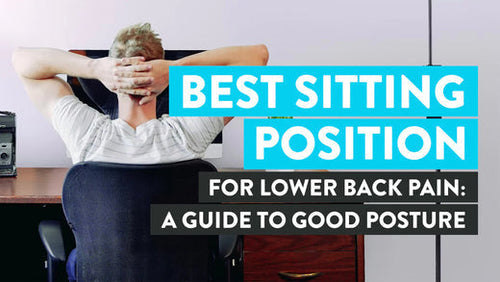
News
Knee Pain Sitting at Desk: Prevent and Avoid It With Proper Ergonomics
Hayden AdamsKnee problems from simply sitting for long periods at a desk have become prevalent in today's modern work environment.
This type of knee discomfort, called desk-related knee pain, can significantly impact an individual's overall well-being and productivity.
Taking proactive steps to address and prevent it in the workplace benefits individuals and promotes a healthier and more productive work environment.
In this article, we will examine the source of knee pain when sitting at a desk, discuss conservative measures and ergonomic adjustments, and more!
Causes of Knee Pain When Sitting at a Desk

So, why does your knee hurt? The femur (thigh bone) has a groove where your patella (knee cap) rests. Different portions of the kneecap lightly touch the femur when you sit.
If certain places are sensitive to contact, you can experience knee pain when sitting or getting up from an office chair. It can be your body's natural response to an unnatural situation.
Let's delve into the various factors contributing to knee pain when sitting at a desk, ranging from poor office ergonomics and wrong position, to lack of movement and muscle imbalances.
GOOD TO KNOW: According to Harvard Medical School, sitting more than 6 to 8 hours daily may harm your health. They recommend avoiding sitting for extended periods, but if you must, get around and stretch your knees every half hour to 60 minutes.
Incorrect Posture
When we sit with incorrect posture, we compromise the natural alignment of our spine and put undue stress on various parts of our bodies, including the knees.
The following are some common postural mistakes that can contribute to the pain:
- Slouching
- Legs crossed
- Sitting too low or too high
- Forward head posture
- Unsupported feet
Prolonged Sitting Periods
In today's predominantly desk-bound work culture, prolonged sitting has become a common part of many individuals' daily routines.
While sitting itself may seem relatively passive, the lack of movement and the static nature of sitting can harm the knees.
Addressing knee pain resulting from long periods of sitting requires proactive measures to counteract the negative effects of sitting.
Arthritis-Related Knee Pain
When sitting at a desk, arthritis, specifically osteoarthritis, is a typical source of knee pain.
Osteoarthritis is a degenerative joint ailment that breaks the cartilage beneath the joints, particularly the knees.
While aging is a primary risk factor for osteoarthritis, desk-related factors can contribute to developing and worsening arthritis-related knee pain.
Patellofemoral Pain Syndrome
Sitting at a desk might aggravate patellofemoral pain syndrome (PFPS), often known as a runner's knee.
It is a medical condition indicated by pain around or behind the patella (kneecap) and is often aggravated by activities that involve bending the knees, including sitting for extended periods.
Managing the pain caused by PFPS (runner's knee) when sitting at a desk involves implementing certain strategies.
GOOD TO KNOW: Housemaid's knee, also known as prepatellar bursitis or knee bursitis, is characterized by the swelling of the bursa in front of the kneecap (patella). The term originated because this condition was common among housemaids who spent long hours kneeling while performing their duties.
Poorly Designed Desk Chairs
Understanding the causes of poorly designed desk chairs can help individuals make informed choices to prevent or alleviate the pain:
- Lack of adjustable features
- Insufficient lumbar aid
- Inadequate cushioning and padding
- The chair's armrests are not adjustable
- Improper seat depth
- Lack of swivel or mobility
Can a bad chair cause knee pain?
Unsuitable office chairs can be a cause for nagging knee pain. Pain issues may arise from an improper desk chair or an inability to adjust the chair height correctly. Therefore, selecting suitable, adjustable chairs for optimal support is critical for maintaining joint health and preventing knee pain.
Solutions for Knee Pain While Sitting at a Desk

Long periods of sitting, incorrect posture, arthritis, patellofemoral pain syndrome, and poorly designed desk chairs can all contribute to knee discomfort and pain.
However, effective solutions are available without significant changes or putting enjoyable activities on hold.
Individuals can find relief and promote better health by implementing targeted strategies and consciously adjusting their workstations and habits.
Ergonomic Sitting Position
Maintaining an ergonomic sitting position is crucial for preventing and alleviating pain while sitting at a desk.
Making conscious adjustments to your workstation setup and adopting good posture can reduce knee strain, promote better alignment, and improve overall comfort.
Pay attention to your body and make the appropriate modifications to support your health and well-being.
Ideal Knee Angle
By ensuring the proper knee angle, individuals can minimize stress on the knee joints, promote better blood circulation, and reduce the risk of a knee injury, discomfort, or pain.
The following guidelines can help you achieve an ideal knee angle while sitting at a desk:
- Knee angle at 90 degrees
- Adjusting chair height
- Seat depth considerations
- Cushioning and support
- Avoid crossed legs or bent underneath you
- Regular movement and stretching
Proper Foot Support
When sitting for extended periods, providing adequate foot support helps maintain proper posture, reduces knee strain, and promotes overall comfort.
Consider the following guidelines to ensure proper foot support while sitting at a desk:
- Flat foot placement
- Adjust chair height
- Footrest height and angle
- Avoid crossed legs
- Use cushioning or matting
- Shift foot position
- Promote movement
{{ spec_cushioned_foot_rest }}
Importance of Lumbar Support
It is essential to getting into an ergonomic sitting position, and it helps to maintain good posture and lower the risk of knee pain when sitting.
Providing adequate support to this area promotes spinal alignment, reduces stress on the spine and surrounding structures, and indirectly supports the knees.
Here's why it is important:
- Spinal alignment
- Reduced strain on the spine
- Improved sitting posture
- Enhanced comfort and reduced fatigue
- Musculoskeletal disorder prevention
{{ spec_pro_plus_chair }}
Frequent Standing and Leg Stretching Breaks
By taking short breaks to stand up and perform leg stretches, individuals can promote blood circulation, relieve undue pressure on the knees, and maintain joint mobility.
Set reminders to take short breaks every 30 minutes to an hour to split your sitting and standing time. Stand up and move around to break the lengthy sitting cycle.
During your breaks, incorporate simple leg stretches to target the muscles surrounding the knees. Weight loss can relieve your knees of some pressure.
Exercise and Strengthening Techniques
Incorporating regular exercise and other physical activity into your daily routine can strengthen the muscles supporting the knees, increase flexibility, and enhance joint stability.
This section will explore various exercise and strengthening techniques to help alleviate the pain and turn your sedentary lifestyle into a more active one.
Quadriceps Strengthening
Knee strength and functionality are significantly affected by the quadriceps muscles in the front of the thigh. Leg raises and knee pulls are some of the easy stretches you can do.
Strengthening these muscles helps alleviate the pain, improve joint stability, and support overall knee health. Here are some key exercises that target the quadriceps:
- Straight leg raises
- Wall squats
- Step-ups
- Leg press machine
- Lunges
- Knee pulls
Hip Muscle Strengthening
Strengthening the hip muscles helps distribute forces more evenly across the lower extremities, reducing knee stress and promoting overall joint health.
Here are some key exercises that target the hip muscles:
- Clamshells
- Hip bridges
- Side-lying leg raises
- Hip abduction with resistance band
- Step-ups with a knee lift
Hamstring Stretching
The rear of the thigh muscles, the hamstrings, are extremely crucial for the stability and flexibility of the knees.
- Standing hamstring stretch
- Seated hamstring stretch
- Supine hamstring stretch
- Hamstring foam rolling
- Dynamic hamstring stretch
Utilising Standing Desks

Standing desks provide an alternative to prolonged sitting, allowing individuals to change their working position and engage in more dynamic movements throughout the day.
Here are some key points to consider when using standing desks:
- Adjustable standing desks
- Gradual transition
- Proper ergonomics
- Anti-fatigue mat
- Movement and stretching
- Proper footwear
- Sit-stand stool
- Listen to your body
Investing in an Ergonomic Chair
Choosing the right chair and adjusting it to suit your needs can reduce pain and improve overall comfort.
It should be big enough so that you can rest comfortably on them. Also, it should be well-designed and positioned correctly with the other furnishings.
Here are some key considerations and benefits of investing in an ergonomic chair:
- Adjustable seat height
- Knee tilt functionality
- Lumbar support
- Seat depth adjustment
- Armrests and armrest height adjustment
- Breathable and comfortable padding
- Swivel and mobility
- Accommodates your spinal curves appropriately
How to properly sit to relieve knee pain
Incorrect posture, such as sitting with crossed legs or sitting on your legs, tends to exacerbate knee pain. Opting for an ergonomic sitting position that alleviate back pain can help.
Maintaining a straight back and keeping your feet on the ground promote good postural habits. Consider using a footrest, which can further aid in positioning your knees correctly.
Essential Points for Correct Posture
- Maintain a straight back
- Keep feet flat on the floor
- Use a footrest for knee positioning
Do doctors recommend kneeling chairs?
Indeed, medical professionals in chiropractic care endorse the use of ergonomic kneeling chairs for better posture. Kneeling chairs help preserve the natural curvature of your spine and can alleviate lower back discomfort. These unique chairs can be a viable solution for people looking to maintain a healthy posture and ease pain.
Preventing Knee Pain from Aggravating Other Conditions
When left unaddressed or managed improperly, the dull ache can aggravate existing conditions and lead to further complications.
Therefore, taking proactive steps to prevent the pain from exacerbating other conditions is crucial. You must talk to orthopaedic surgeons for a physical exam, blood tests, etc.
They can properly diagnose your ailment and suggest treatment options. Arthroscopic surgery or Chondromalacia Treatment may be good options if self-care does not provide relief.
Monitoring Pain Symptoms for Osteoarthritis
Osteoarthritis happens when the covering cartilage that cushions the joints begins to wear down, resulting in pain, stiffness, and reduced mobility.
Regularly assess the severity and nature of your knee pain. Pay attention to any swelling or stiffness in the knee joint, as these are common signs of knee osteoarthritis.
Recognizing Early Signs of Rheumatoid Arthritis
Rheumatoid arthritis is an inflammatory disease that leads to joint pain and persistent swelling, particularly in the knees.
Pay attention to persistent pain and stiffness lasting over a few weeks. Rheumatoid arthritis typically symmetrically affects joints on both sides of the body.
Rheumatoid arthritis often presents with symptoms of fatigue, generalized malaise, and feeling unwell. Watch for signs of affected joints, particularly in the knees.
Reducing the Impact on Gout Pain
If you have gout and your knee hurts, it is crucial to prevent the aggravation of gout pain and minimize the impact on other conditions.
Follow your healthcare provider's medication regimen for managing gout. Make dietary adjustments to reduce the risk of gout attacks.
Maintain a healthy weight or attain a healthy weight range. Stay well-hydrated by drinking adequate water throughout the day.
Frequently Asked Questions
We have compiled these topics to address the frequently asked questions surrounding this issue to provide valuable insights and guidance.
How Can a Bad Desk Chair Contribute to Knee Pain?
Too-tall or too-short workspaces force your body into an awkward position as you work, which is bad for all the joints in your body.
Your knees will be constantly bent when you sit in a chair that is too low, which might result in knee pain and joint issues.
Which Exercises Are Most Effective to Relieve Knee Pain While Sitting at a Desk?
The Knee Full Extension Exercise is one of the most effective exercises to relieve knee pains.
Sit on a comfortable chair high enough for the knees to bend to a 90-degree angle first. Lift the other leg gradually until it is horizontal.
Hold for five seconds, then let it slowly lower it again. Continue with the opposite leg.
What Is a Proper Sitting Position to Avoid Knee Pain?
Sitting with your feet flat on the floor and your back straight is the proper ergonomic sitting position to avoid knee pain.
How Often Should I Take Standing and Stretching Breaks When Sitting for Long Periods?
Avoid sitting down for prolonged periods; try to stand up at least once every 20 to 30 minutes. Never sit for more than 10 minutes after two hours.
Can Using a Footrest Help Alleviate Knee Pain While Sitting at a Table for Extended Periods?
Yes. Footrests help straighten posture, lessen fatigue, and lessen pain or discomfort in the thighs, feet, ankles, and knees.
Are Recliners Good for Your Knees?
While reclining chairs may provide momentary comfort, prolonged use can lead to problems in the musculature and joint health. Over time, chronic use of a recliner can induce hip and knee contractures, leading to tight muscles over your joints. This, in turn, can result in adverse postural changes, thereby impairing upright posture and standing.
Conclusion
To summarize, the pain experienced while sitting at a desk for an extended period can be attributed to various factors, including incorrect posture, awkward position, etc.
People can relieve knee pain and promote long-term health by prioritizing proper ergonomics, incorporating regular breaks and rehab exercises, and addressing underlying conditions.
Remember, maintaining healthy and pain-free knees is essential for a comfortable seating position and overall well-being and productivity in daily life.
Keep your appointments with a medical professional or physical therapist. They might order tests like a physical exam, blood work, or x-ray, which can help determine why you are in pain.
Prioritizing your physical health can significantly improve managing and preventing knee pain associated with desk work.


